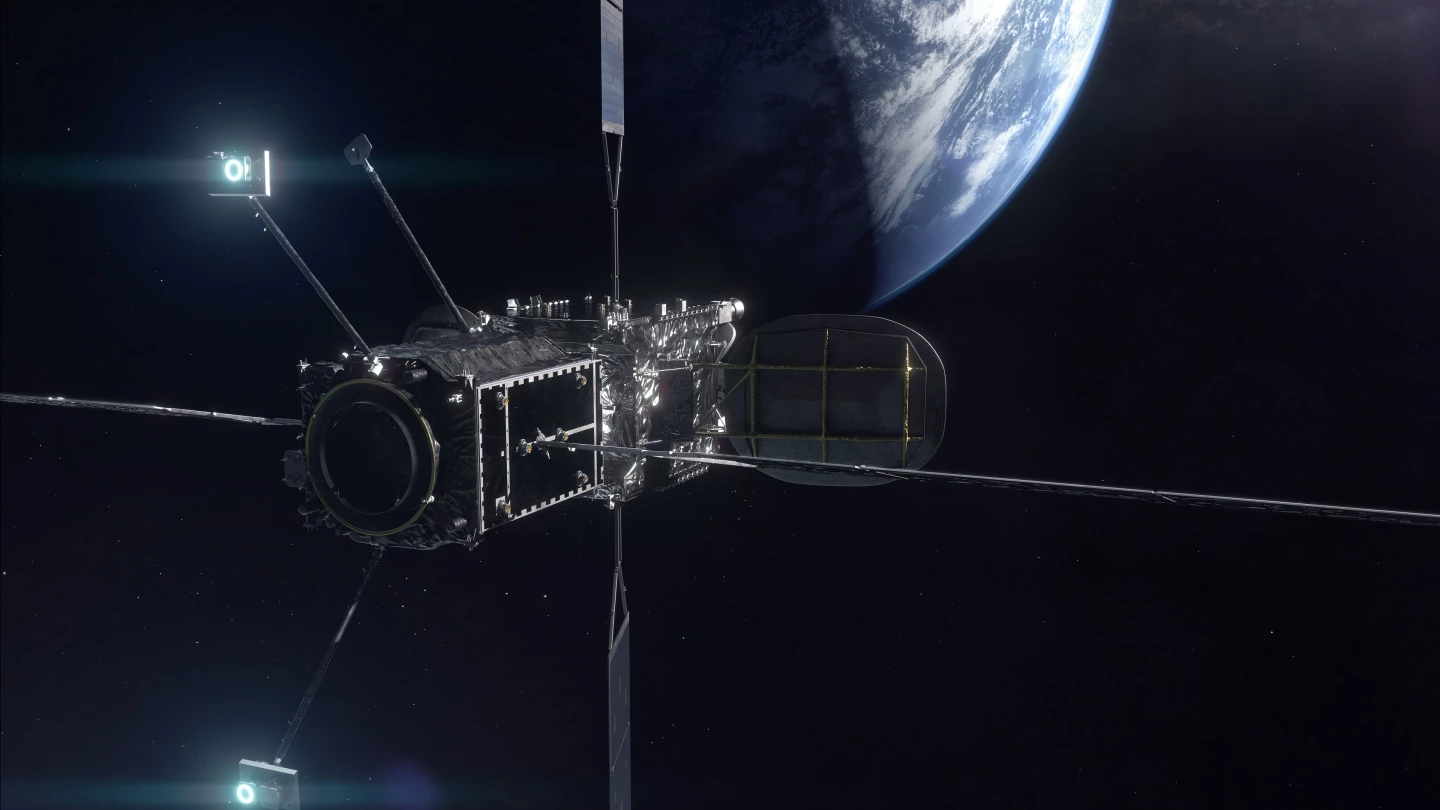Northrop Grumman and its SpaceLogistics LLC subsidiary have made the first successful docking of their robotic service vehicle with a fully operational communications satellite. On April 12, 2021 at 1:34 pm EST, the Mission Extension Vehicle-2 (MEV-2) linked up to the Intelsat 10-02 (IS-10-02) commercial communications satellite in geosynchronous orbit 22,416 mi (36,076 km) above the Earth to begin a five-year life extension mission.
One of the most wasteful problems with commercial spaceflight is that very expensive satellites have frustratingly short lifespans. This is often not because the satellite has broken down, but due to it running short of the propellant needed to keep it on station and pointed in the right direction.
Launched on August 15, 2020 atop an Ariane 5 rocket, MEV-2 prevents this premature retirement by docking over the satellite's now-inoperative main thruster and taking over the orbital maneuvering and attitude control for Intelsat 10-02. Because the MEV-2 uses cameras for docking that could be pointed at the Earth, it has to operate under a US NOAA remote sensing license.

The successful docking is the second for the MEV program, the first being a test flight in February 2020, when MEV-1 docked with Intelsat 901, which was stationed above Geosynchronous orbit after depletion of its propellant supply led to its being removed from operation. MEV-2 will remain docked with Intelsat 10-02 for five years before undocking to move to a new customer satellite.
According to Northrop, The MEV is the first of a planned line of service spacecraft. In 2024, the company will launch a Mission Robotic Vehicle (MRV) with a robotic arm for inspections and repairs, as well as installing Mission Extension Pods (MEP). After 2025, it will deploy Mission Refueling Pods (MRP) to resupply compatible satellites, as well as actively removing space debris near high-value satellites. Sometime in the next decade, these will be joined by the Mission Assembly and Repair Vehicle (MARV) for manufacturing and assembling satellites in orbit.
"Today’s successful docking of our second Mission Extension Vehicle further demonstrates the reliability, safety and utility of in-space logistics," says Tom Wilson, vice president, strategic space systems, Northrop Grumman and president, SpaceLogistics LLC. "The success of this mission paves the way for our second generation of servicing satellites and robotics, offering flexibility and resiliency for both commercial and government satellite operators, which can enable entirely new classes of missions."
Source: Northrop Grumman












